Flowers in Mostar
& the Art of Returning
Mostar, Bosnia & Herzegovina, May 2025
In my short year and a half of living the digital nomad life, Mostar is the first place I’ve returned to. That simple act — returning — is its own kind of magic. There’s the familiar feel of the streets, the cafes where I once lingered, and the chance to experience a new season. The best part: people I met last year, likely expecting never to see me again, who greet me with surprised smiles and big hugs (or handshakes, depending on who it is). I can almost hear them thinking:
What is she doing back here?
It’s a fair question. I could go anywhere. But I chose Mostar again — and here’s why.
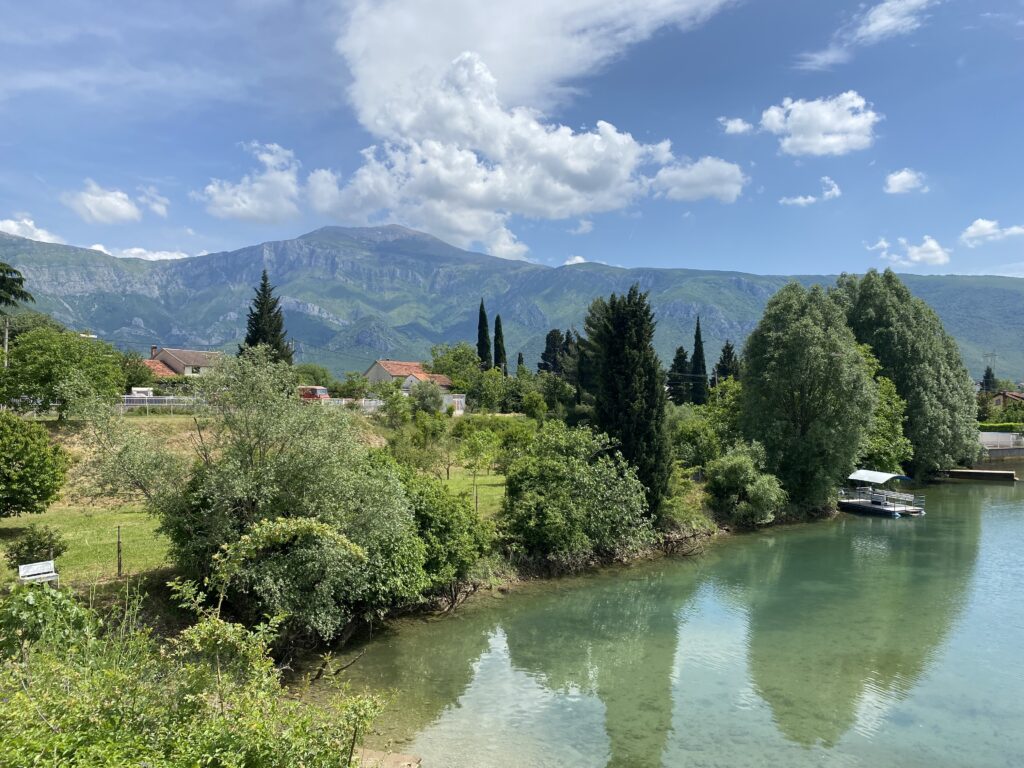
Finding Purpose in Community
Last fall, I had the opportunity to get involved in Mostar’s community in small but meaningful ways. I made local connections and volunteered with a few organizations doing amazing work to uplift people in the city and country.
One of the most impactful places I spent time was Centar Los Rosales — an organization dedicated to supporting children with disabilities and offering rehabilitation workshops for disabled adults. These programs are entirely voluntary; the participants show up daily to create because they are seen and valued in this space. They design and build handcrafted pieces through woodworking, quilling, sewing, painting, and more.
The work they create is not only beautiful — it’s marketable. Their art is sold in local shops, which helps fund the programs. But even more than that, it builds purpose.
In a country where stigma surrounding disability remains strong, the manner in whichLos Rosales serves them with not only dedicated, compassionate and highly qualified therapists, but systems to help integrate them into a thriving community is truly inspiring.
We all want to contribute to the world around us, to fulfill a purpose, and no one deserves to be neglected in that pursuit because of what others think they can or cannot do. There is a lot of love expressed in this space, and a mission to help the students recognize that they are capable, with their own unique gifts, of creating a better world. What better way to do so than through art and a powerful narrative?
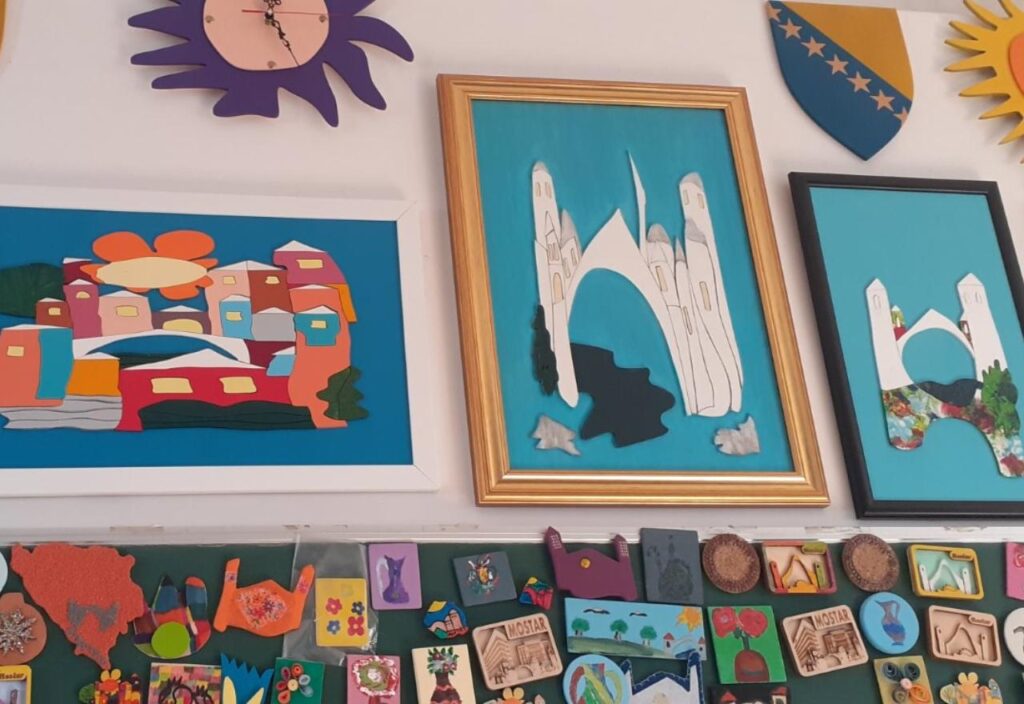
The Blooming of an Idea
After my first visit, I couldn’t stop thinking about the students’ flower-inspired artwork — 3D-printed, painted pieces used as magnets, bookmarks, and framed designs. Over coffee one day, my friend Marcie (who originally introduced me to the projects in BiH) and I had an idea:
What if we hosted an entirely flower-focused workshop?
I’m a strong believer in the power of nature to invigorate our spirits and remind us in its simple glory of what really matters. So, what if we introduced real, tactile florals — a new way to create, connect, and explore?
Plus, the students and staff at Los Rosales love having visitors bring fresh energy and new ideas, even if the projects are short-term. And with that, the plan began to bloom. A most important piece: the event itself may be short term, but our relationship is not. This, again, is the power of returning.
A Return Visit — With My Mom
Six months later, I returned to Mostar — this time with my mom!
She’s a professional florist, with years of experience running her own floral design company and teaching classes. It’s rare that we get to travel together, so this trip became something really special: a way to share time, place, and purpose — and to bring the floral workshop idea to life.
(By the end of the week I’d tell her, “I think this is the most epic mother-daughter trip I’ve ever heard of.” I mean really, combining meaningful service, fresh flowers, meeting my local friends, and having adventures like a spontaneous day of driving up the Croatian coast stopping at hidden beaches? These are forever memories!)
Before we left Michigan, we hosted a wreath-making fundraiser. (To those who supported that event — thank you again!) Following that, we packed our bags full of supplies: artificial flowers, greens, ribbons, wire, glue guns, and plenty of hope.
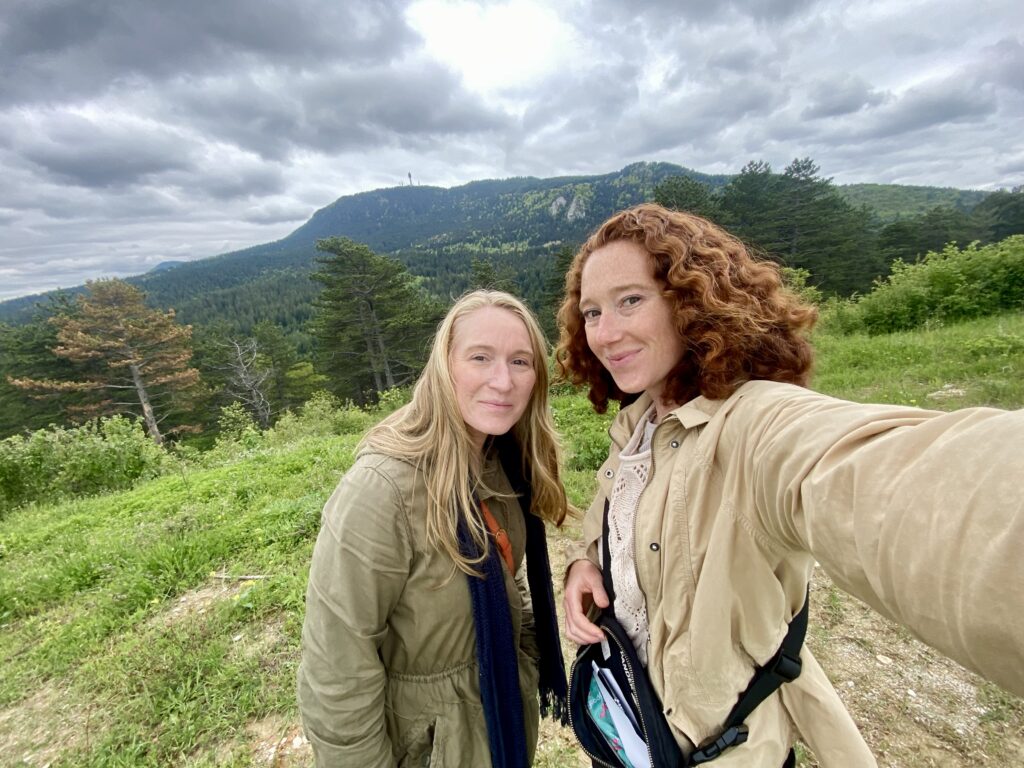
Flower Mart and Floraging
Once in Mostar, we met Alma, a team member from Los Rosales, who guided us to the flower market. I stepped back and watched my mom at work — inspecting stems, choosing bundles of Gerber daisies, lisianthus, button mums, roses, statice, baby’s breath, and asters.
We left with armfuls of color, flowers spilling over our elbows as we craned our necks to see the sidewalk.
After some light prep work on the flowers, we embarked on the next mission: floraging.
Picture this: walking down a hidden cobblestone alley to the river, so turquoise it looks like God has poured 3x his own prescribed amount of river dye and said, “That’s good.” There is an abundance of spring foliage–daisies popping up through the cracks, wild pomegranate buds on hardy branches, wispy wheat-like stems with kitten tails, and plenty of greens to complement the pastel flowers purchased that morning.
If there’s one thing my mom and I agree on 100% when it comes to floral design, it’s that the beauty would lose its balance without them:
It’s all about the greens; the unsung heroes of every bouquet. They are the grounding elements, subtle and stabilizing, needed to give everything else its shape. Well-placed greens allow the vibrance and energy of flowers to shine.
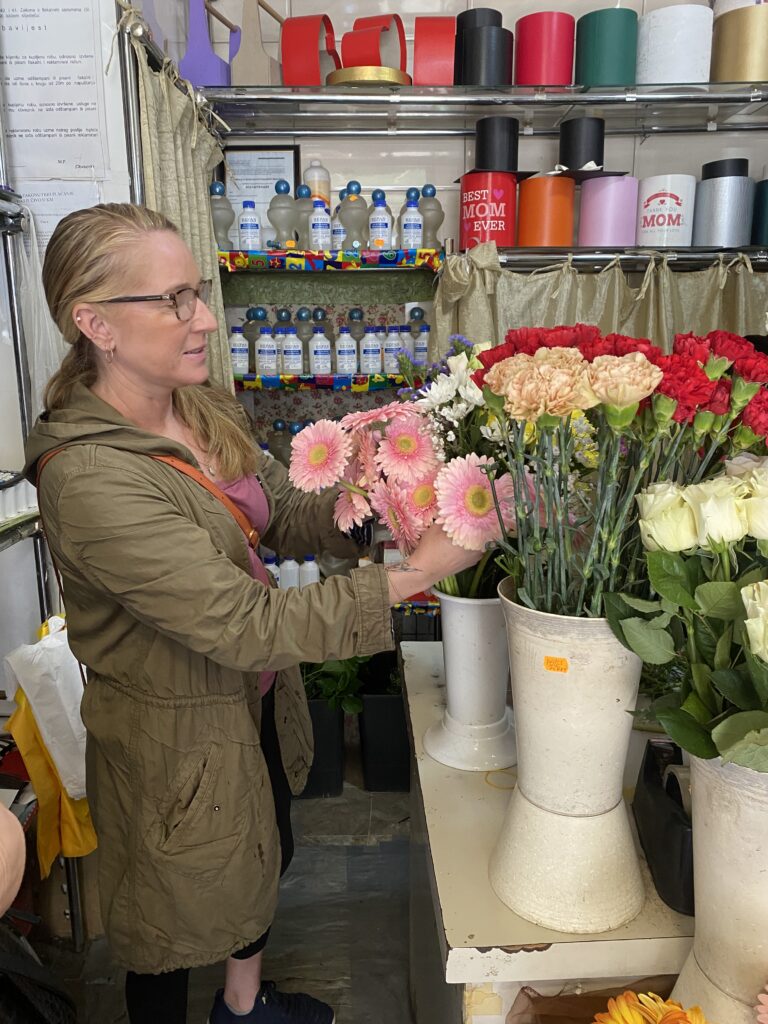
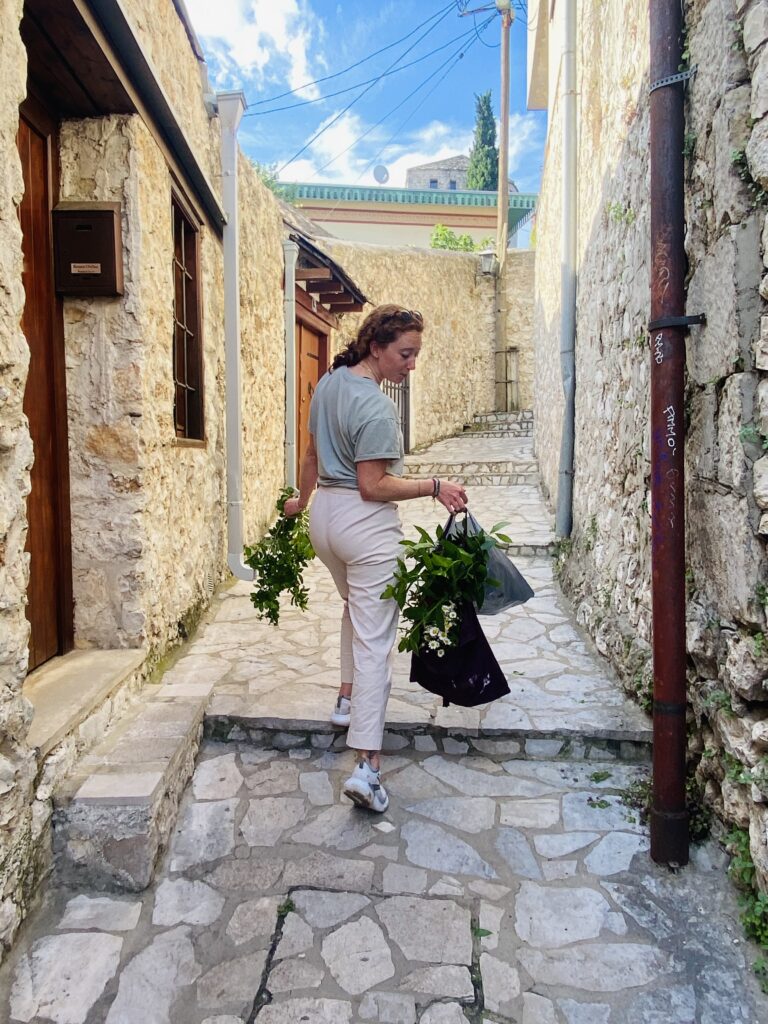
Workshop at Los Rosales
The next morning, we arrived early at Los Rosales, expecting it to take half an hour to set up.
It took five minutes.
Everyone was eager to help. Under the outdoor pagoda, on a sunny morning, students gathered around tables with empty vases in front of them, ready to begin. We were introduced as:
“Victoria and her mother, friends from America, here to show us some things with flowers.”
I stood to the side as my mom made a demo bouquet, describing each step in English while Alma translated into Bosnian. She showed them how to choose flowers and greens, how to place them stem by stem, and how to tie a ribbon around the vase when finished.
It may seem like a simple task, but watching each student carefully select stems, adjust angles, and create something they were proud of reminded me — once again — of the beauty in their hearts and minds, too often overlooked.
Both staff and students enjoyed the workshop. Some made more than one bouquet. Flowers were tucked behind ears. Photos were taken. Smiles were abundant.
At the end, I stood to say a few words, with Mirna translating.
“You all did such a beautiful job,” I told them. “It’s so special to be here with my mom, who taught me everything I know about flowers. She showed me that a bouquet is its own kind of love language. I hope you’ll share your arrangements with someone you love — and keep creating, because you are so talented, and the world needs what you have to offer.”
One girl smiled and said:
“Now if someone in my family gets married, I know I can help with the flowers.”
My heart just about melted.
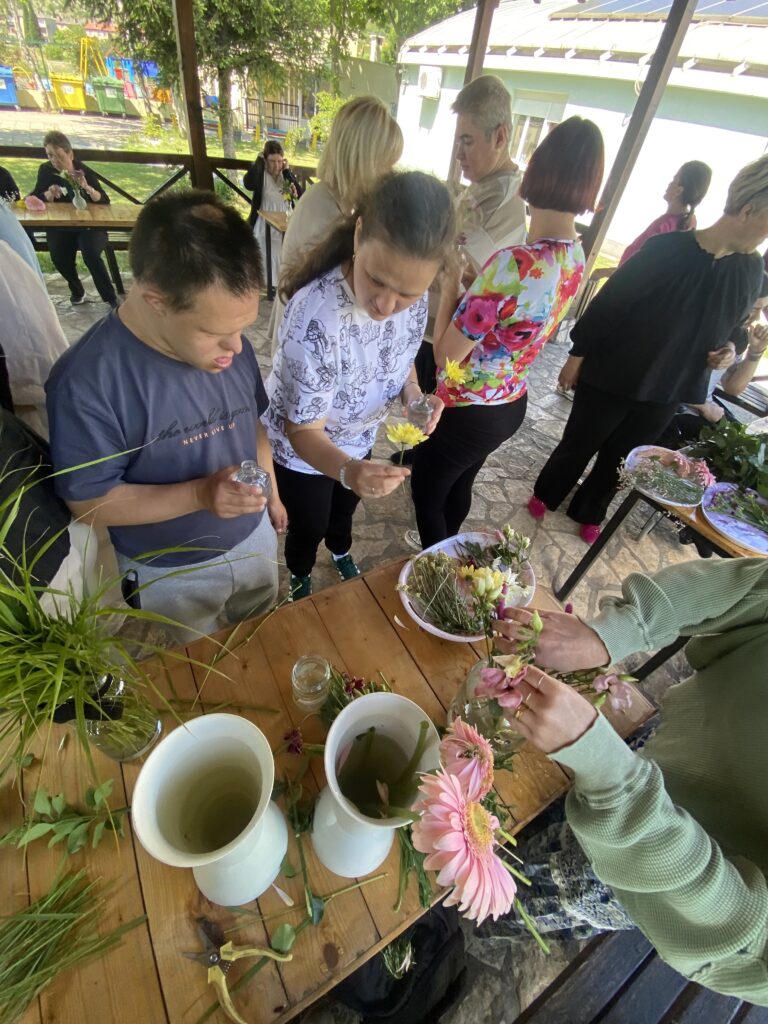

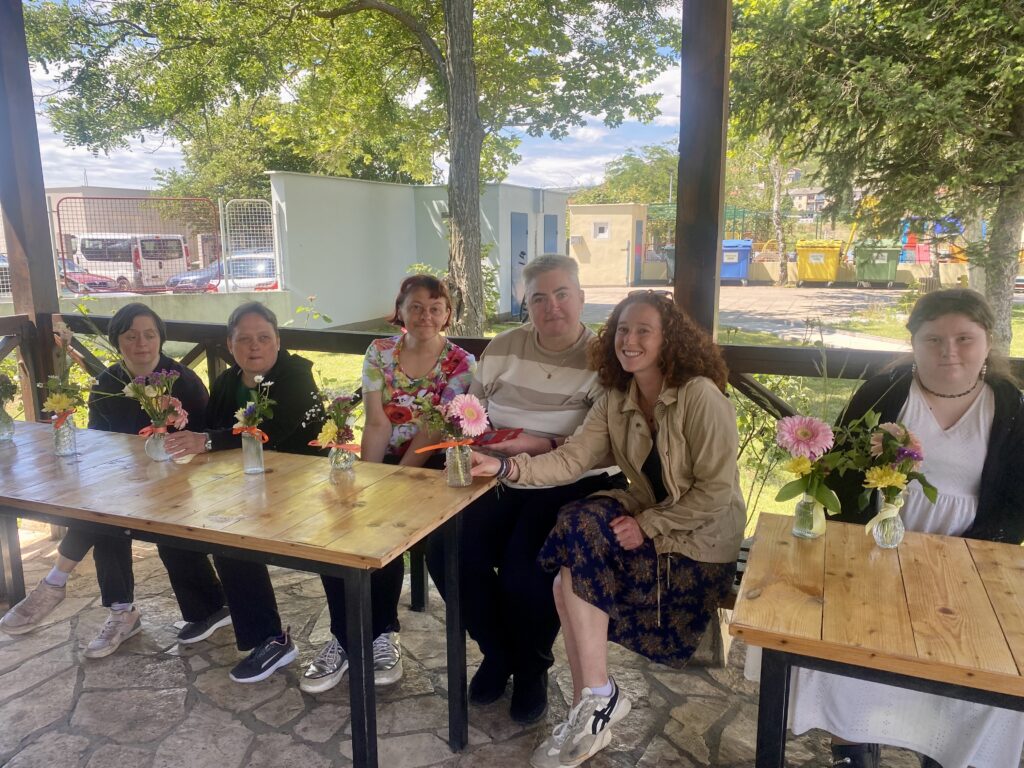
An Evening of Crowns and Community
Later that day, under umbrellas and dodging raindrops, we carried bags of flowers across town to a local evangelical church. This time, we were working with artificial florals — perfect for making flower crowns that wouldn’t wilt.
The event was a fellowship gathering — women from the church and community came together for a creative, joyful evening. My mom led a demonstration, with Jelena translating, showing how to shape a wire base, wrap stems, and build a crown. Soon the room was full of laughter and color.
“How did you finish yours so fast?”
“Yours looks amazing!”
“This flower won’t stay!”
Even when I didn’t understand the Bosnian chatter, their energy was radiant. For our sake, they tried their best in English too.
Pretty soon, we had a room full of fairies. Some crowns were bursting with large blooms; others more delicate and green. The women wore them proudly all evening — posing for photos, admiring each other’s work. Later, we showed them how to tie the ribbon into a loop and turn the crowns into wreaths they could hang at home.
They loved that idea. I imagine floral wreaths now scattered across homes in Mostar — a reminder of shared laughter and friendship.
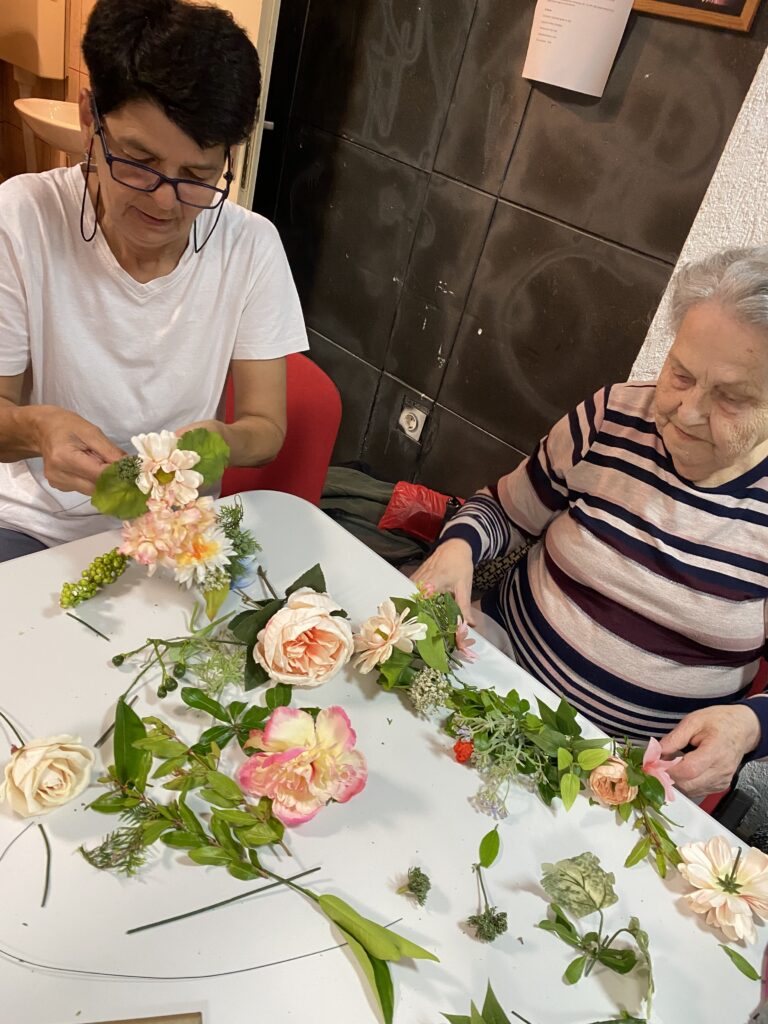
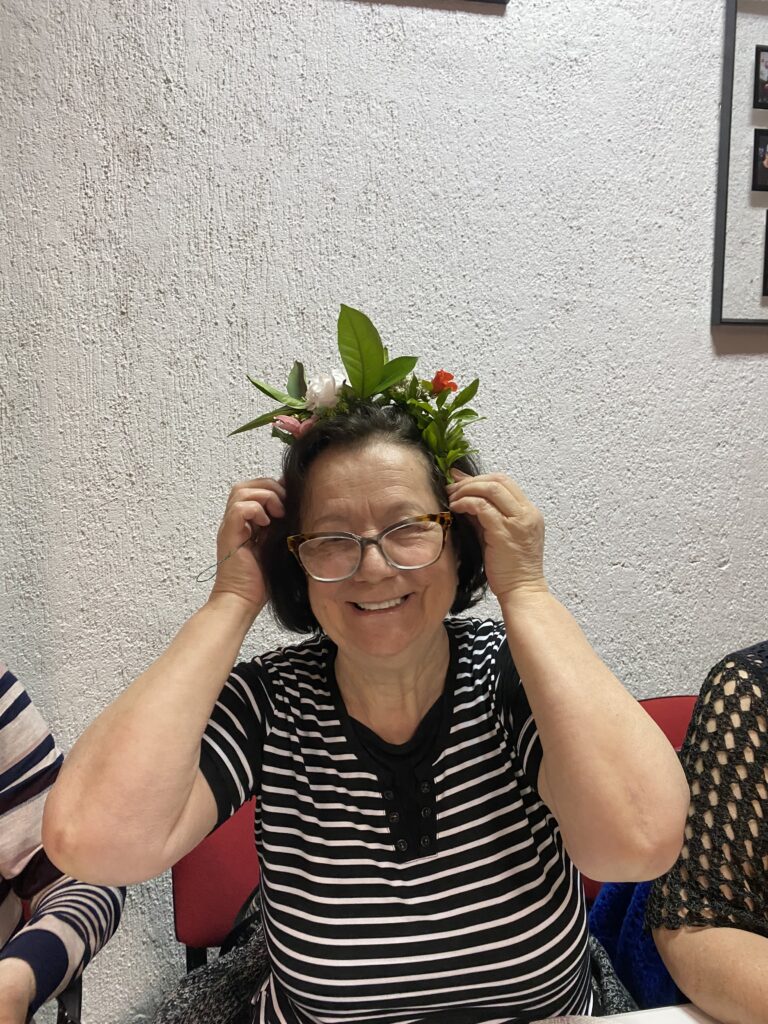

Closing Reflections
Before we left, Jelena asked me to speak. I told the women about my background, about the faith I was raised with, about how my mom played an integral part in passing that down to me. I shared how traveling often means being without a home church, and how grateful I felt to be welcomed into theirs — even temporarily.
Their smiles said, Come back any time. Or even… stay!
Then Jelena shared her own reflection — one I’ll never forget. She spoke about the flowers and the process we went through to create the crowns, how we began with a simple wire, twisting and shaping it around flower stems, sometimes getting poked or tangled. By the end, the thorns and sharp pieces were all hidden by the beauty of the blooms. This final product is what mattered most.
She spoke about the flowers and the process we went through to create the crowns; how we began with just a piece of wire and had to twist and shape it around the flower stems, sometimes getting poked or tangled along the way. In the end, some thorny pieces are still there, but the beauty of the flowers covers them and the final product is what matters most. It was an image of the unconditional love that has covered us and calls us beautiful, worthy, daughters of Christ.
A perfect metaphor. And a perfect end to a day of shared purpose.
Thank You, Mostar
Sharing love through flowers is a gift. Despite the effort and planning it took to bring this to life — far from home — it was worth every moment. We brought a piece of our home into this great big world, and in return, Mostar gave us its heart.
I hope we made an impact that lasts beyond the events themselves. I believe we did. I hope the students and women we met felt the lightness that comes from working hands-on with small pieces of nature; how being in touch with creation can bring us a little closer to its maker.
I hope the message resonated: how we can always show love to one another with flowers — whether it’s a single stem plucked from between sidewalk cracks or an entire arrangement tied with a ribbon.
To everyone in Mostar: thank you for inviting us in.
And to everyone who supported this project and my travels: thank you for being part of this story. I’m committed to giving back to the communities I immerse myself in — and I’m so grateful for the encouragement and support I receive from home along the way.

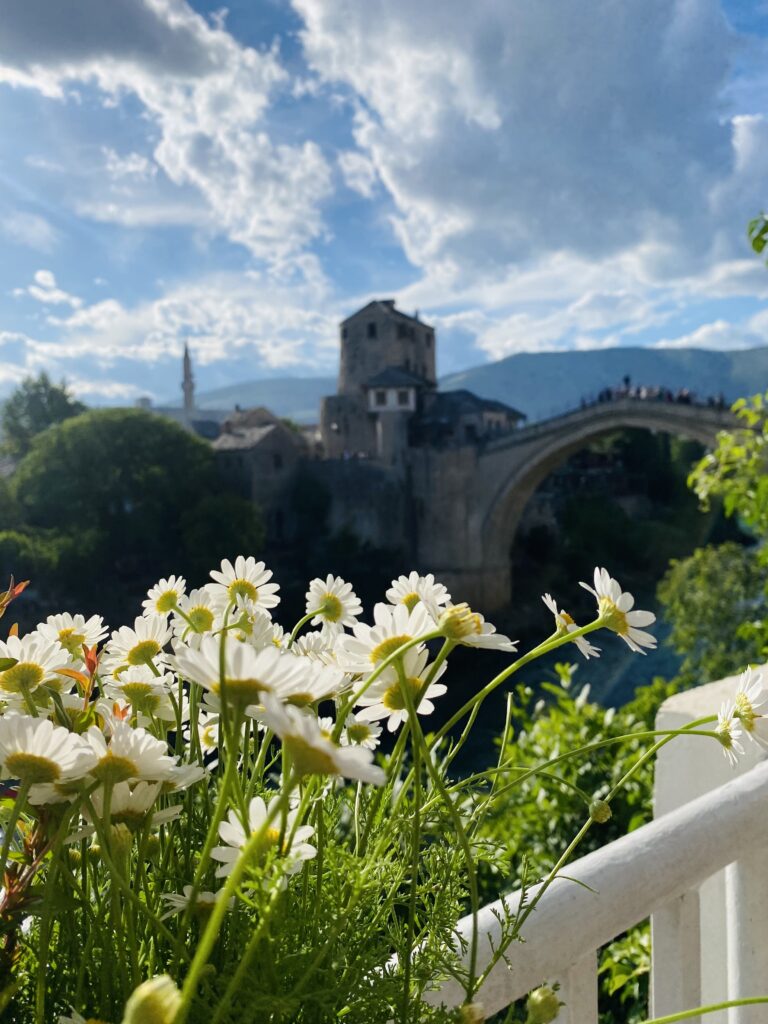
![Vignettes by V [and other miscellany] logo](https://vignettesbyv.com/wp-content/uploads/2024/04/C96F28F1-618C-41EB-832A-E04D4A6EC68D.png)
![Vignettes by V [and other miscellany] logo](https://vignettesbyv.com/wp-content/uploads/2024/04/C96F28F1-618C-41EB-832A-E04D4A6EC68D-300x300.png)
Amazing!! 🤩❤️❤️
Rachael…
This is such a beautiful and inspiring story. What an amazing gift you gave to those in Mostar. All the people you inspired, will now go on to inspire others and bring beauty into the lives of others.
Your pictures are incredible.
It would be awesome if their artwork could be in Fair trade stores.
Thanks for sharing.
You are filled with Sunshine 🌞
Rachael…
This is such a beautiful and inspiring story. What an amazing gift you gave to those in Mostar. All the people you inspired, will now go on to inspire others and bring beauty into the lives of others.
Your pictures are incredible.
It would be awesome if their artwork could be in Fair trade stores.
Thanks for sharing.
You are filled with Sunshine 🌞